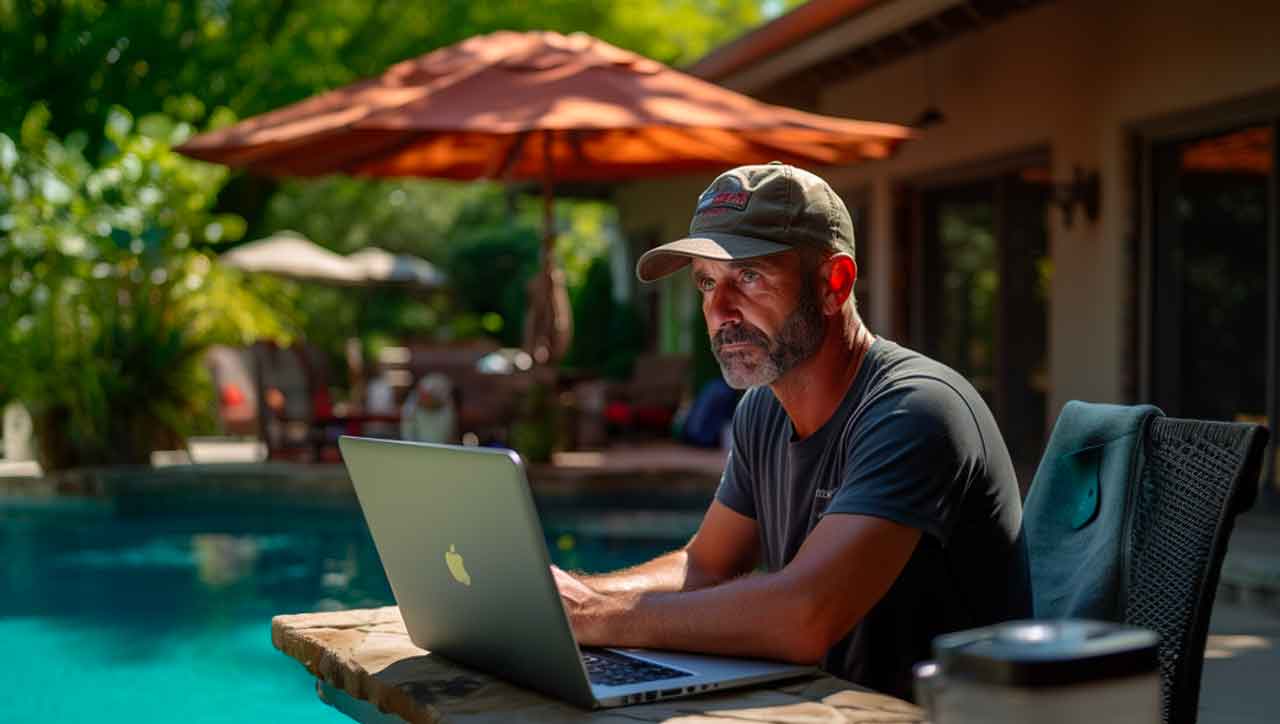Contractors and Builders
Thinking of Selling Your Pool Company? Know Your Worth
Thinking of selling your pool company? It helps to know your worth. Find out what investors are really looking for when buying a company.

Selling a pool business requires more than just crunching numbers and applying a basic formula. A friend and colleague of mine in the pool industry, learned this the hard way. Despite having yearly sales of $2 million and an EBITDA of $200,000, he initially believed his business was worth between $600,000 and $1,000,000. However, a deeper analysis revealed that the true worth was closer to zero. One thing became clear to me, if you’re thinking of selling your pool company, it certainly helps to know your worth.
Figuring Out What Your Pool Company Is Worth
Understanding the key components that determine a pool company’s value is crucial for anyone considering selling their business. The primary drivers are EBITDA (earnings before interest, taxes, depreciation, and amortization) and multiples of EBITDA.

EBITDA: The Foundation of Value
EBITDA serves as a fundamental indicator, representing the operational profitability of a business. Investors often look for businesses with a 20% profit margin, valuing them at three to five times their EBITDA. For example, a pool company generating $1 million annually with an EBITDA of $200,000, the estimated value could range from $600,000 to $1 million.
Some simplify the valuation process by associating the value directly with revenue. For instance, a business with $1 million in revenue might be considered worth $1 million. However, this simplistic approach neglects the nuances that savvy investors scrutinize.
Factors That Decrease Value: Beware of Red Flags
Merely relying on the EBITDA formula is insufficient. Investors consider various factors beyond the numbers. For example, a business owner not paying themselves a salary, might falsely believe their profit is the true measure of success. However, investors aren’t just buying a business; they’re buying a sustainable operation. Industries with low profitability or thin profit margins are sure to deter investors.
Moreover, risks such as high turnover rates, equipment issues, or seasonal businesses with no new customers can decrease confidence, making investors hesitant to pay a premium.

Going Beyond Simple Math To Find Value When Selling a Pool Company
As businesses scale in revenue, the multiples of EBITDA change significantly. Larger companies with steady revenue streams may be valued at five to seven times EBITDA, or even higher if they go public. Patents on proprietary technology can further elevate the valuation.
Consider Instagram, a company with only 13 employees valued at $1 billion when acquired by Facebook. Patented technology can attract major players and launch bidding wars, driving multiples into the stratosphere.

What Are Investors Looking For?
Investors typically look for several key factors that can make buying a pool company more attractive. These factors can contribute to the overall value and potential return on investment. Here are some important considerations when selling your pool company:
Stable Revenue and Profit Margins:
Consistent and growing revenue streams are attractive to investors. A pool company with a stable customer base and recurring revenue from services such as maintenance contracts can be more appealing.
Healthy profit margins demonstrate the company’s ability to manage costs effectively.
Customer Base and Contracts:
A large and diverse customer base with long-term contracts can provide a predictable income stream and reduce the risk of revenue fluctuations.
Contracts for pool construction, maintenance, and repair services can enhance the company’s value by ensuring ongoing business.
Reputation and Brand Recognition:
A strong reputation for quality service, customer satisfaction, and reliability can significantly enhance the company’s value. Positive customer reviews and testimonials contribute to brand recognition.
Established brand equity can be a competitive advantage and attract new customers.
Geographic Reach:
A pool company that serves a broad geographic area or has the potential for expansion into new markets may be more appealing to investors looking for growth opportunities.
A diverse customer base across different regions can help mitigate risks associated with local economic downturns.
Technological Integration:
Companies that leverage technology for efficient operations, customer management, and data analysis are often more attractive to investors.
Integration of smart pool technologies and other innovations can position the company as forward-thinking and responsive to market trends.
Experienced Management Team:
A skilled and experienced management team is crucial. Investors often look for a team with a proven track record in the pool industry, as well as a history of successful business management.
The presence of knowledgeable and capable leaders can instill confidence in investors.
Compliance and Regulatory Considerations:
Adherence to industry regulations and compliance with safety standards is essential. Companies with a strong commitment to legal and regulatory compliance are generally viewed more favorably by investors.
Financial Health and Growth Potential:
A strong balance sheet, positive cash flow, and manageable debt levels are indicators of financial health.
Clear growth potential, whether through expansion, diversification, or innovation, is attractive to investors seeking a return on their investment.
Environmental and Sustainability Practices:
Increasingly, investors are interested in companies that prioritize environmental sustainability. This may include energy-efficient pool systems, responsible water management, and eco-friendly pool chemicals.
Market Trends and Industry Outlook:
Awareness of and adaptation to current market trends, such as the increasing demand for home improvement services, sustainable practices, and smart home technologies, can enhance a pool company’s attractiveness to investors.
Becoming More Attractive To Investors
For pool companies looking to sell, the time to enhance value is now. Going the extra mile by pushing sales, increasing social media presence, and staying relevant can significantly impact the company’s perceived worth. Introducing innovative products can lead to substantial increases in EBITDA and future sale value.
Even small improvements, such as a 1% or 2% increase, can translate into millions of dollars. Building confidence in your company not only attracts investors but also maximizes the return on investment when it comes time to sell. In the dynamic pool industry, strategic efforts to bolster value will undoubtedly pay off in the long run.

Determining The True Value of a Pool Company
Valuing a pool company requires a multifaceted assessment that encompasses financial metrics, industry dynamics, and qualitative factors. Investors seeking to determine the company’s worth typically delve into the financial health, examining revenue sources, profit margins, and Earnings Before Interest, Taxes, Depreciation, and Amortization (EBITDA).
Additionally, the composition and stability of the customer base, existing contracts, and backlog of projects are crucial indicators of future revenue and growth potential. Tangible assets, liabilities, and cash flow analysis provide insights into the company’s financial structure, while an evaluation of the management team’s experience, brand reputation, and compliance with industry regulations contributes to the overall assessment.
Beyond financial considerations, investors scrutinize the company’s position in the market, competitive landscape, and its alignment with industry trends. The geographic reach, technological integration, and commitment to innovation are also pivotal factors. Evaluating risk factors, including customer concentration and potential challenges in the regulatory environment, is essential. The investor’s exit strategy and the company’s future growth prospects, whether through market expansion or service diversification, add further dimensions to the comprehensive valuation process.
One thing is certainly for sure, selling your pool company these days isn’t always so cut and dry. Ultimately, the valuation of a pool company is a nuanced undertaking that requires a combination of financial expertise, industry knowledge, and a thorough understanding of qualitative factors to arrive at a well-rounded assessment of the company’s value. Finding the right buyer who truly understands what your company is worth is the key to getting the right price.
Contractors and Builders
Building Out

The 2022 PHTA Builder of the Year shares top tips for service providers looking to get into pool construction
When Kyle Chaikin began building pools, he dove in head-first. He had been servicing pools for more than a decade and just completed his first renovations when a long-time customer asked him to build his hotel pool. “I told him I had never done it before, but I would sure like to try,” he says.
With the customer’s support, he built his first pool. Not long after, Chaikin found himself with two more hotel jobs and his service company progressing into the construction space — a move he says he never intentionally planned.
Fast-forward past a merger in 2011, and Chaikin is now president of Long Island, New York-based Chaikin Ultimate Pools and was named the 2022 Builder of the Year by the Pool & Hot Tub Alliance (PHTA). His company still services pools under the business arm The Ultimate in Pool Care, and Chaikin himself oversees residential and commercial builds — many of them high-end — on the construction side.
To build or not to build
For both service companies and builders alike, the grass often seems greener on the other side. Builders often turn to service to maintain business with customers they built pools for, but the draw from service to construction is just as strong.
“There’s always a push to get into construction from the service side,” says Chaikin. “Sometimes it works out great. In my case, it seems to have worked out, and we’re very happy, and I know lots of companies that have done it.”
However, Chaikin advises that service companies weigh the pros and cons of making the change carefully, as the big jobs in construction can mean “big money, but also bigger headaches.”
“There’s always something, there’s always an issue, whether it’s with a piece of equipment or not being able to get a piece of equipment, or perhaps even the timing of it,” he says.
Scheduling projects can be especially challenging on the commercial side, where you often must meet the demands of customers while at the mercy of general contractors’ timetables.
However, while the world of construction can bring big risks, it can also yield big rewards.
“Monetarily, if you’re doing it well and doing it right, there’s money to be made by being a good builder who does the job properly and on time,” says Chaikin.
How to build a construction business
For those service companies determined to make it big as builders, Chaikin shares his top tips for getting started and ramping up.
Tip #1: Get the prerequisites first.
“The best advice I can give is to go through the proper channels,” Chaikin says. Before starting, you’ll want to have the necessary education, license, experience, and insurance needed to build safely and properly.
- Education and licensure — You will want to obtain and maintain the Certified Builder Professional (CBP) certification if you are to build pools that are economic, efficient, and safe, according to Chaikin. You can earn all four levels of certification, from CBP to Master CBP, through the PHTA GENESIS® education program.
- Experience — “Classrooms are great, but get out in the field and check it out first,” says Chaikin. If you’re starting at square one, his advice is to subcontract out a builder and observe the job start to finish until you can understand and avoid common obstacles yourself.
- Insurance — Make sure your insurance will cover construction work. The insurance you need to build pools is not the same as the insurance needed to run a business or service pools.
Tip #2: Get the proper people in place.
Ensuring you have the correct workers building your projects is critical, as the pool of qualified skilled builders is currently small.
“If you’re building a swimming pool these days, even in a backyard, you need a pretty high level of knowledge to make sure that you’re building it properly and engineering it correctly,” he says.
As safety is paramount, you’ll want to make sure those who are building the pool and overseeing the build know all the building codes in the jurisdiction in which you are working. Be aware that commercial and residential codes are quite different. The laws will vary in different locations as well. For example, in New York an engineer is required to design all the hydraulics and structural components of commercial pools.
Tip #3: Get pricing right.
Supply chain issues have begun to resolve, but builders are still dealing with some unexpected price increases for materials. Chaikin says including escalation clauses or force majeure in building contracts can help provide financial relief. However, this can be difficult on the commercial side.
“These general contractors and developers have become savvy, if not shark-like,” he says, adding that most will refuse escalation clauses and look for someone else.
If you cannot protect against escalation, you will need to make sure that all parties stay on schedule, so your project is priced properly. You can limit your liability by getting a substantial completion date.
Tip #4: Get involved in the industry.
Chaikin says his involvement in the industry has been the most beneficial thing for his business. This means committing to continuous learning, as well as helping to teach others.
“If all our peers are doing the same education tracks, the more knowledgeable everybody is, the better educated everybody is, then the better the industry will be.”
Photo Credit to Chaikin Ultimate Pools
Contractors and Builders
Pool Techs Cash In On Hayward’s “Get Paid To Upgrade” Program

Hayward®, a leading manufacturer of pool products, has launched an enticing new program called “Get Paid to Upgrade,” aimed at pool servicers, technicians, and builders. The initiative rewards these professionals with a $50 payment for each installation of a qualifying Hayward product, replacing a competitor’s pump, heater, filter, or other select equipment. The campaign not only benefits pool contractors by providing an additional revenue stream but also demonstrates Hayward’s commitment to supporting pool repair companies and their clients.
Hayward’s “Get Paid to Upgrade” program has been designed to be effortless and efficient for pool technicians. Participants can access the program website, www.Promotions.Hayward.com, through any mobile device or desktop. Pool techs are required to enter their email address, upload before and after installation photos, provide the new Hayward product’s serial number, and answer a few questions. Once the verification process is approved, Hayward offers a choice of a $50 digital reward from a variety of partner options, ranging from food and home improvement to electronics and outdoors.
The “Get Paid to Upgrade” campaign encompasses a broad selection of Hayward’s pool products, including pumps, filters, heaters, sanitization systems, water features, lighting, and more. This extensive lineup offers contractors a range of options to upgrade their customers’ pools, while simultaneously earning rewards for their efforts.

A Win-Win for Pool Contractors
Pool contractors like Scott Reynolds, owner of Purpose Pools in Las Vegas, have found the “Get Paid to Upgrade” program to be a boon for their businesses. Currently, his firm ranks second in the nation for submissions to the program. Reynolds described the initiative as a “no-brainer”.
“It’s an opportunity to generate some additional revenue and also to serve our clients,” said Reynolds, “what we do is take the rebates and use them as bonuses for our team members. At times, we’ve also used that bonus to discount certain Hayward products for seniors on a budget. It’s a great representation of how well Hayward supports pool repair companies like ours and of course, the clients that we serve.”
“We’re working together with Hayward on our local community outreach program,” said Reynolds. “We make donations regularly here in the Las Vegas area to local charities and nonprofits. Specifically, there is this one initiative called Project 150, where we’re helping underprivileged high school students get ready for this upcoming school year. Hayward was quick to jump in and get involved and are matching a large donation that we’re making to help some kids out before school starts,” said Reynolds, elaborating on ways his firm is collaborating with Hayward at a local level.
Listen to our entire conversation with Scott Reynolds on the Pool Magazine podcast.
Reynolds certainly isn’t the only one leveraging the rewards offered by Hayward. Pool companies like his are taking advantage of ways they can boost team morale by using the earned bonuses to incentivize their technicians. Moreover, companies are also passing these rewards on to homeowners, enabling them to offer discounts to those homeowners in need.
The success of the “Get Paid to Upgrade” program reflects Hayward’s commitment to supporting pool repair companies. By offering rewards for upgrading customers to their premium pool products, Hayward helps pool technicians expand their offerings and enhance customer satisfaction. The program not only strengthens business relationships but also fosters a sense of collaboration between Hayward and pool contractors.
Hayward’s “Get Paid to Upgrade” program is proving to be a popular program for pool contractors, providing them with an opportunity to earn additional income while delivering top-notch products and services to their clients. The program’s ease of use and broad range of eligible products make it an attractive proposition for pool technicians looking to upgrade their customers’ pools. Moreover, the rewards earned through the program foster goodwill and enable contractors to support their team members and provide discounts to clients in need. As pool contractors continue to cash in on this beneficial campaign, Hayward’s commitment to supporting the industry remains unwavering, further solidifying its position as a leader in the pool products market.
Contractors and Builders
Jimmy Reed on Preventing Pool Tile Failures

When it comes to the installation of pool tile, few others in the industry have the wealth of experience and know-how that Jimmy Reed of Rock Solid Tile possesses. His innate ability to create stunningly beautiful tile interiors has helped propel him as one of the leading installers working today. As a recognized expert on the subject, he also knows a few things about adhering to the proper methods and best practices. Consequently, a recent video he posted on social media has generated quite a stir among other contractors and highlights why certain pool tile failures occur.
To get a better understanding of exactly what went wrong in the video, we caught up with Jimmy Reed at the Western Pool & Spa Show in Long Beach to get the full story as well as pick his brain about how to prevent failures like the one he demonstrates in this video.
“This particular project we actually originally bid to perform the installation on several years earlier. It was for a completely different general contractor and pool builder at the time,” explained Reed.
“I was called onto the project by the newer owner, and therefore, a new general contractor and owners rep and so forth. It was a completely different team by the time I was revisiting the project. What happened with the project though was it was failing throughout. The short little clip in the video really only showed a small portion of the spa, but that was consistent throughout the entire pool not just the spa,” said Reed.
Analyzing a Catastrophic Pool Tile Failure
In the video, you can see him pulling large chunks of tile off with his fingers with a minimal amount of effort. This was a disastrous failure where the pool tile had not properly bonded and was absorbing and retaining water.
“The thin-set is soft and gooey. It’s a modified thin-set,” said Reed in the video explaining why this particular failure occurred. “It probably wasn’t cured right. There are ridge marks everywhere. They didn’t knock down the ridges in the thin-set so they probably didn’t get 100% coverage. There’s only probably 50-60% coverage on the back of the tile. The thin-set didn’t bond to the concrete. That’s the bottom line,” explained Reed, “I don’t even see a waterproofing membrane. It looks like they applied thin-set directly to the float.”
Disastrous Pool Tile Failures Can Be a Costly Lesson
Failures of this nature can be enormously costly. “This was a fairly large free-form pool up in Beverly Hills, a little bit above Sunset, so it was in a hilly area. This pool had probably between 2,000 and 2,500 square feet of tile material that, of course, had to be completely removed. Let’s say it’s 2,500 sqft. That would be close to between $50,000 and $75,000, just for materials; and then labor for doing something like that would depend on the installer.” said Reed.
No matter what the client ultimately paid, it would appear from the catastrophic failure witnessed in the video, that it was too much. “The mortar bed was completely saturated and delaminating from the shell as you can see in the video which was just the tile layer peeling right off. There was literally no bonding between the thin-set and the substrate,” explained Reed, “all I had to do was use a screwdriver that the contractor that was there provided me with. It just opened right up and gushed out water that it was holding behind all the tile.”
Identifying The Source of The Problem
“Visually they saw bubbles. When you pushed on the bubbles, air would come out of these big lumps in the tile surface. All you had to do was push on it and things would start flying around. It was pretty bad,” remarked Reed.
“As I recall, there was no evidence of any waterproof membrane. That also tells me that there definitely wasn’t any type of colloidal silicate sprayed on the surface. The float that was applied looked to me to be very uneven and not laid out properly and it was just a very sloppy installation process from what I saw. There were grooves throughout and a lot of trail notch marks below the surface of the pool tile itself. You want to avoid that type of thing,” said Reed.
Learning The Proper Installation Technique
Because Reed sees so many failures in his line of work, we asked him where pool tile contractors could learn the proper methods of installation. “As far as the correct process, I mean, there’s a whole list of steps that goes into that type of installation from the shell out. It’s unfortunate that there aren’t a lot of places that I know of that specifically that train and walk contractors through the proper steps to do a full application,” said Reed.
“I believe Watershape University is working on something at the moment, and I may be participating with them in the near future. Also, Ask The Masters is a really good forum for professionals to inquire and share. But like any other learned trade, mentorship and experience is critical.” said Reed.
Want to take a deeper dive? Listen to our entire conversation with master tile installer, Jimmy Reed on the Pool Magazine podcast.
-

 Pool News4 weeks ago
Pool News4 weeks agoLandslide Damages Homes, Destroys Swimming Pool in California
-

 Manufacturer2 weeks ago
Manufacturer2 weeks agoSRS Distribution Announces Next Phase of Growth by Combining with The Home Depot to Better Serve Professional Customers
-

 Pool News4 weeks ago
Pool News4 weeks agoFluidra Launches €20 Million Venture Capital Fund – Fluidra Ventures
-

 Cleaning and Service Equipment and Supplies2 weeks ago
Cleaning and Service Equipment and Supplies2 weeks agoRecent Leslie’s/Harris Poll Study Shows Nearly Three-Quarters of Americans Mistakenly Assume Clear Pool Water Is Clean, Swim-Safe Water
-

 Manufacturer4 weeks ago
Manufacturer4 weeks agoBofA Downgrades Latham Group Citing Weak Pool Construction Market
-

 Pool News2 weeks ago
Pool News2 weeks agoHotel Pool Had Numerous Violations in Case Where 8-Year-Old Was Pulled Into Pipe
-

 Pool News5 days ago
Pool News5 days agoEarthquake in Taiwan Causes Waterfall From Rooftop Pool
-

 Equipment Supplies3 weeks ago
Equipment Supplies3 weeks agoFWP Faces Class Action Lawsuit Stemming From 2023 Cyberattack






































